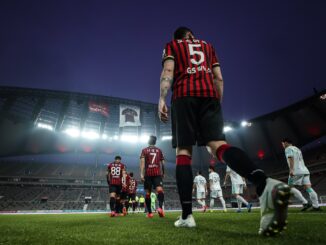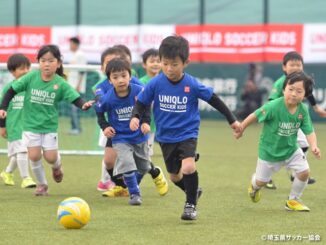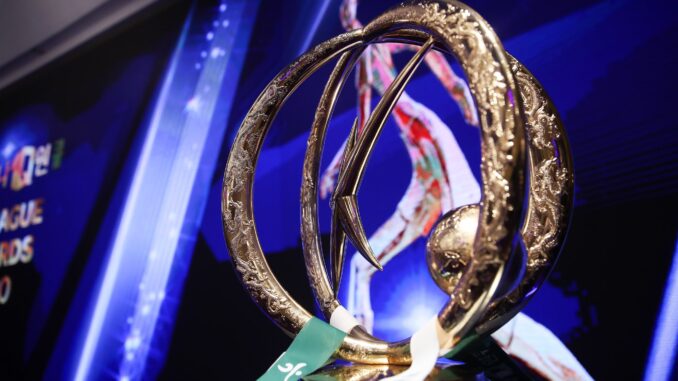
With the 2021 K-League 1 season just around the corner, what better time to look at the teams that will be taking part this year.
Ulsan Hyundai’s victory in last year’s AFC Champion’s League reminded everyone that the KL1 is still one of Asia’s top leagues, while their late season capitulation in last year’s league also reminded everyone that it’s also one of Asia’s most unpredictable.
The upcoming season will no doubt have its fair share of twists and turns. So before it gets underway let have a careful look at the teams who will be competing in the 2021 K League 1.
Daegu FC
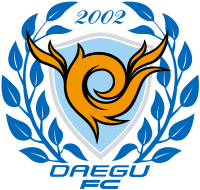
Since returning to the top flight in 2017 Daegu have been perennial mid-table finishers. A repeat of last season’s fifth place finish will be considered a big success for the club, given that Daegu’s squad has significantly thinned out this off season.
Shin Chang-moo and Kim Seon-min are amongst a glut of midfielders who have left the club in recent months. And Daegu’s attack is expected to lose a lot of its potency with the departures of veteran Montenegrin striker Dejan Damjanović and Korean youngster Kim Dae-won.
How Daegu perform this year will depend a lot on Brazilian forward Cesinha. Last year they were heavily reliant on the 31-year-old for goals and creative flair, so will need him on top form again if they are to secure another top-half finish.
Gangwon FC
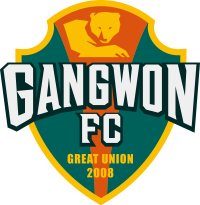
Like Daegu, Gangwon have been a steady mid-table side since returning to KL1 in 2017. Last year they started strongly before hitting a terrible run of form, which saw them take just eight points from 12 games. In the end a couple of vital wins during the final stages of the season clawed them back up to mid-table.
A leaky defence was a key problem for the team last year and they have sought to rectify this issue during off-season by bringing in centre backs Rustam Ashurmatov and Rim Chang-woo.
Both are a considerable upgrade on what they previously had at their disposal and should help shore up their backline. And with this issue resolved, Gangwon will be hopeful of a better showing this time round.
Gwangju FC
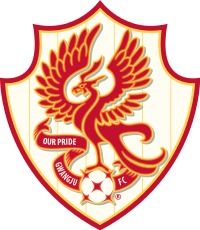
After a poor start to the 2020 season, Gwangju managed a surprising sixth placed finish in their first year back in KL1.
During the course of the campaign they favoured a very gung-ho attacking style of play that brought them plenty of goals, but often left them exposed defensively.
This winter they’ve have sought to alleviate this problem by bringing in centre-backs Kim Won-sik and Aleksandar Andrejevic.
While these signings may make Gwangju a lot more solid at the back, they may not be as potent going forward this year, with Costa Rican striker Marcos Ureña and Brazilian winger Willyan both leaving the club this winter.
That being said they have still retained a fair amount of attacking talent. By far most exciting player to watch out for this year at Gwangju will be right-winger Um Won-sang. The 22-year-old had a breakout year season last year, and is expected to shine as one of the league’s top young talents in 2021.
Incheon United
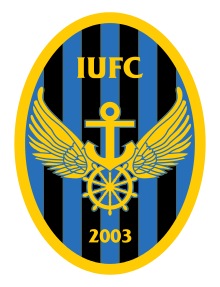
For the past five consecutive seasons Incheon have consistently managed to drag themselves into the relegation dogfight and then somehow managed to avoid the drop.
Last year a poor start to the season saw manager Lim Wan-sup resign early on. Incheon then continued to struggle under caretaker manager Lim Joong-yong, and by the time Jo Sung-hwan took the reins mid-way through the season they were still winless and sitting bottom of the table.
Fortunately for Incheon, Jo managed to mastermind a dramatic reversal of fortunes which saw them win seven of their last 12 games and avoid relegation on the last day of the season.
It will be interesting to see if they can carry this momentum into the coming season. They have been extremely busy in the transfer market this winter, with Jo overseeing a significant revamping of the squad.
It’s unlikely that we’ll see Incheon pushing for much more than a mid-table finish year, but just staying out of the relegation mix for the first time in years would be a success for the northern club.
Jeju United
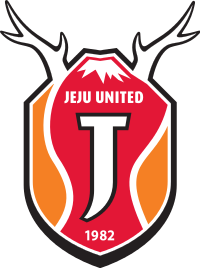
In 2020 Jeju United secured promotion back to the KL1 at the first time of asking, after finishing the season six points clear at the top of KL2.
2020 was also manager Nam Ki-il’s first season in charge of Jeju and it will be interesting to see whether he can build on last year’s success this season.
While Jeju have not been as active in the transfer market as they were prior to the 2020 season, they have made some solid signings this winter. Key new players to look out for this year will be winger Gerso Fernandes, formerly of MLS side Sporting Kansas City, and central-midfield dynamo Yeo Reum who had previously spent nearly a decade with Gwangju.
Another player to keep tabs on will be youngster Lee Dong-ryul. Lee broke into the team midway through last season and took KL2 by storm, notching five goals and three assists as he went onto win the KL2 Young Player of the Year award. Despite being only 20 years old, he definitely seems to have the ability and the temperament needed to make the step up to KL1 this year.
Jeonbuk Hyundai
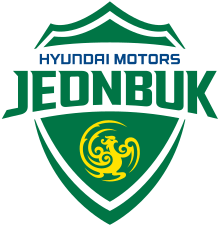
Jeonbuk come into the 2021 season hoping to secure their fifth consecutive K League title. Last year they battled out a tightly contested title race with Ulsan Hyundai and secured victory on the last day of the season with a 2-0 against Daegu.
2021 will be Jeonbuk’s first season in over a decade without club legend Lee Dong-gook. Lee racked up over 400 appearances for Jeonbuk over a 12 year stretch with the club and despite scoring some crucial goals last year he decided to hang up his boots at the end of the campaign.
The only other key players from last year to leave are left-back Kim Jin-su who left to join Saudi side Al-Nassr and defensive midfielder Son Jun-ho who has joined Chinese Super League outfit Shandong Taishan.
Jeonbuk haven’t made many big signings this off-season, but bringing in Russian striker Stanislav Iljutcenko from Pohang Steelers could possibly be the shrewdest move of any K-League team this winter. Iljutcenko has been one of one the most prolific strikers in KL1 over the past two years and finished 2020 on a white-hot run of form. If he is able to continue where he left off, it will be difficult to stop Jeonbuk retaining the title this year.
Pohang Steelers
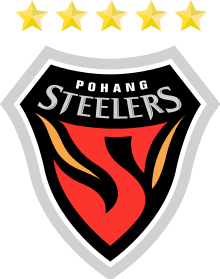
Pohang Steelers come into the 2021 on the back of one of their best seasons in a considerable while. In 2020 they secured ACL qualification for the first time in five years and finished the season as the league’s top scoring team.
Following departures of key attacking players Aleksandar Palocevic and Stanislav Iljutcenko, it seems unlikely however that the Steelers will be able to repeat last year’s success
With Iljutcenko and Palocevic now out of the picture, a lot more will be required of young attacking talent Song Min-kyu. Last year Song emerged as one of Korean football’s top young talents, finding the net ten times and notching six assists on his way to scooping up the KL1 Young Player of the Year award.
If Pohang are to replicate last year’s third place finish, a lot will depend on his ability to step up and become the team’s main attacking threat.
Suwon Bluewings
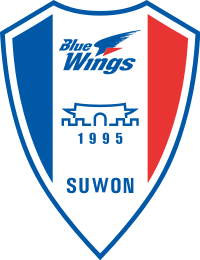
2020 turned out to be another disappointing season for Suwon Bluewings. Throughout the year they struggled to put together a decent run of form and spent the majority of the season languishing close to the foot of the table.
While the Bluewings were pretty solid at the back last year, their biggest issue was a lack of goals.
Adam Taggart finished as the club’s top scorer with nine goals and with him now gone it’s difficult to see how things are going to get better. The Bluewings haven’t been particularly active in the transfer market, but have at least brought in two forwards who could make a difference in Uros Djeric and Nicolao Dumitru.
While K-League veteran Uros Djeric may seem to be very much a bargain basement signing, if he can rediscover his 2018 form he could prove to be an invaluable addition to the squad.
Dumitru is perhaps more likely to make an instant impact and had previously been in excellent form this season playing for Gaz Metan in Romania’s top tier. If can quickly adjust to Korean football his speed and ability to open up defences could be the difference between relegation and survival for the Bluewings.
FC Seoul
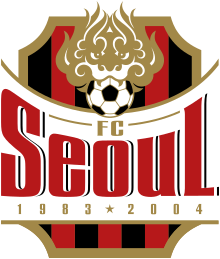
Seoul had a disastrous 2020 season where they regularly hovered just above the relegation zone and posted the worst goal difference in KL1.
New manager Park Jin-sub has unsurprisingly sought to revamp the squad this winter.
By far the biggest signing he has made as part of this process is Serbian playmaker Aleksandar Paločević. Paločević proved to be one of KL1’s best attacking players last season while on loan at Pohang Steelers and his arrival in the capital should help transform Seoul into a much more viable attacking threat.
Park has also sought to strengthen Seoul’s defence by signing Hong Joon-ho from Gwangju. The athletic 27-year-old centre-back should help to provide some much need mobility to Seoul’s back line which looked vulnerable on the counter-attack last season.
While it’s unlikely that Seoul will improve sufficiently this year to challenge for ACL places, a significantly improved squad coupled with a capable and ambitious young manager should allow them to steer well clear of the relegation mire.
Seongnam FC
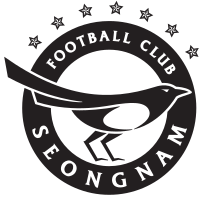
One of the powerhouses of Korean football from the early 1990s to the mid 2000s, Seongnam went into decline in the 2010s and were eventually relegated from the top-tier in 2016.
Since returning to KL1 in 2019 they have consistently struggled at the lower end of the table.
In 2020 Seongnam only secured top-flight status on the last day of the season. Whilst they were solid enough at the back and generally difficult to break down, they really struggled when going forward.
This off-season manager Kim Nam-il has sought to resolve this issue by bringing in a number of new strikers.
Amongst these are Sergiu Buș a Romanian journeyman who has been a consistent goal scorer in Eastern Europe’s top leagues over the past eight years. Perhaps more interestingly Fejsal Mulic, a giant standing over two meters tall, who could potentially cause mayhem at set-pieces.
Neither of these two have played in East Asia before, so no one really knows what kind of impact they will make. But Seongnam will probably need to see a decent level of production from one of the pair if they are to avoid being caught up in a relegation battle this year.
Suwon FC
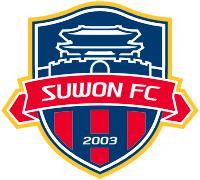
Suwon were something of a surprise package last year in KL2, finishing second in the league before going on to win promotion through the play-offs.
After such a successful season last year, it has come as shock to many that manager Kim Do-kyun has decided to undergo a significant refit of his squad ahead of the 2021 season.
The most notable players to have left the club as part of this restructuring process are Japanese born North Korean international An Byong-jun and Japanese forward Masatoshi Ishida.
An was prolific in front of goal last year and finished as KL2 top scorer in 2020, while Ishida provided much of the team’s attacking and creative flair.
Adjusting to the loss of these two as well a host of other players will be a big test for Suwon next year. And while Kim has brought in a significant number of experienced new signings, it’s by no means guaranteed that they will be able to gel as a team for the new season.
Ulsan Hyundai
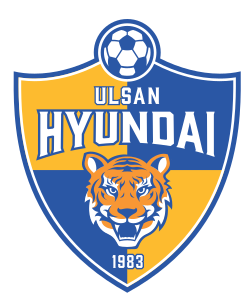
Ulsan’s 2020 season was a strange mix of elation and disappointment.
While Ulsan fans were euphoric as their team went onto capture their second ACL title in nine years, they were also left tearing their hair out as a late season meltdown gifted the domestic title to Jeonbuk.
Ulsan’s late season capitulation in the league was not without its consequences, and Korean football legend Hong Myung-bo was brought into replace Kim Do-hoon as manager.
Hong subsequently went about undertaking a comprehensive rebuild of the squad, with an emphasis on youth over experience. A number of ageing big-name veterans were subsequently jettisoned, and Hong raided KL2 for some of its top young talent.
How well this will work out for Ulsan will depend on how quickly these new young players can adjust to playing together and whether they can achieve the level consistency Ulsan will need if they are to claim their first K League title since 2005.
Photo: K League


